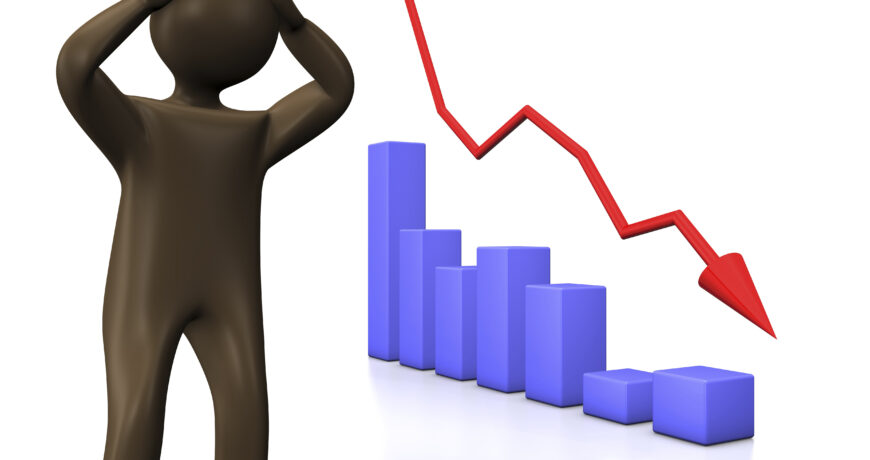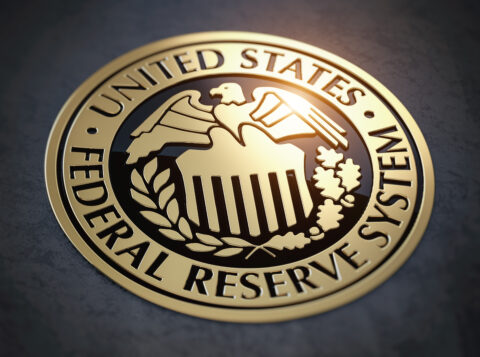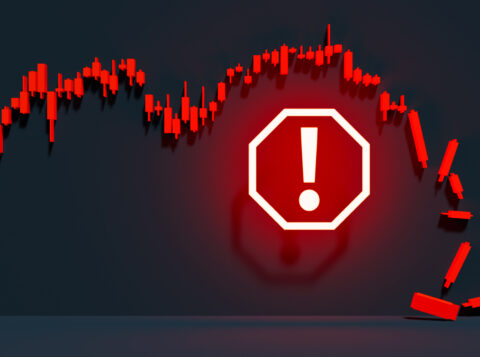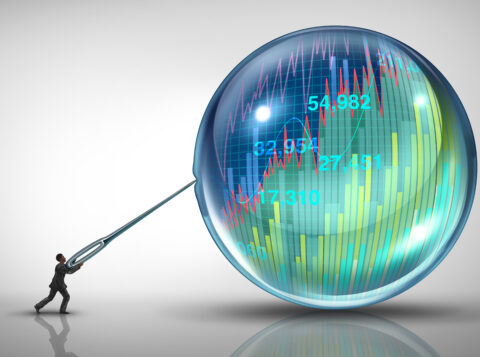
Past, Present, & Future of Market Volatility
Every up has a down, every down has an up. Lulls and downturns in trade are cyclic norms—something our stock market is no stranger to. Historically speaking, the global market sees a downturn approximately every 10 years. Since retirement has been left to individuals to figure out, a lot of options to build a retirement savings are invested.
How can you protect your retirement assets from a market crash? The best way to begin doing so is understanding major market corrections within the last century.
Market Crash of 1929
As a catalyst to the Great Depression, this crash ending the market up known as the Roaring Twenties. The market was booming in the 1920s. Over almost a 2-month period, the market slowly descended into a 13% decline on Black Monday and followed on Black Tuesday with a 12% decline.
The bear market immerged by mid-November with the Dow having lost more than 20% of its pre-crash value. Losing value until it bottomed in the summer of 1932, the Dow took until 1954 to reach the 1929 pre-crash value.
The cause? Investors and investment trusts bulk-purchased stocks on margin—paying a tenth of a stock’s value under a loan. At this time, too, consumers began to acquire credit, purchasing items left and right. The debt bubble burst causing the catalyst of the Great Depression.
Crash of 1987
The Black Monday of 1987, this crash began when the Dow dropped over 20% in a single day. That November is when all the market indexes had lost 20% of their value. The rebound took almost two years, much faster compared to the Black Monday and Black Tuesday set off in 1929. By September of 1989 the market indexes reflected a complete bounce back of the 1987 losses.
The cause? A series of events: a growing U.S. trade deficit and worldly tensions, especially those in the Middle East, contributed to the market. The biggest factor was the computerized trading programs that had been launched. Computers would automate large buys when prices raised and sell orders when prices tumbled. When the trading-verse was floored by these automation, other investors would panic-sell and panic-buy.
1999-2000 Dot-Com Bubble Crash
In the late 1990s, internet-based stocks drastically skyrocketed. Resulting in the tech-dominated Nasdaq index to surge. The surge met its maker with a 77% drop over 2000-2001, reaching its lowest point in October 2002. Nasdaq did not see a pre-crash value for almost 15 years.
The cause? The Dot-Com Crash is a serial offender. The foremost cause was overvalued internet stock. Investors predicted that online companies would become profitable, so they poured their money into the ‘dot com’ sector. Secondly, the Federal Reserve restricted their monetary policy, straining capital flow.
Crisis of 2008
About ten years prior, the Federal National Mortgage Association made home loans more accessible to higher-risk individuals—those with less money for down payments and low credit scores. Payments for these people came with the reflection of their high-risk profiles: above average interest rates and variable, pricy payment schedules.
With mortgage debt availability increased, investors and previously ineligible borrowers ate up the opportunity. However, consumers during this were racking up additional debt. Companies saw an increase in debt, too, because they wanted to take advantage of the economic boom.
The collapse happened by September that year. Stock indexes had lost over 20% of their value because investing banks could not cover their loss from taking on the high-risk mortgages. It took four years for the market to reach its pre-crash value.
The cause? The American economy was debt-fueled. Banks and real estate were drowning.
Coronavirus Induced Crash
As the most recent, this crash occurred worldwide. During the last week of February several of the market indexes dropped 11.5%, marking the biggest loss since the crisis of 2008. The Dow set a record on March 12 when it fell by 10%. Sadly, four days later, it dropped another 13%. These were the largest day-drops the Dow saw since Black Monday of 1987.
This crash bounced back by May because of stimulus money, the Federal Reserve cut interest rates and pumped trillions into markets. Congress passed a massive aid package to stimulate the economy, too.
The cause? Covid-19 infections shutting down economies worldwide that domino-effected supply chains and workflow.
How can I use this information to help my retirement?
It shows that market crashes and corrections can happen whenever. The best course of action now is to lower retirement risk and diversify your retirement assets, so you are protected when a market crash does happen.
Retirement planning is the most important step in reducing the market volatility risk. Have six months of living expenses saved in a rainy-day fund. This way you are prepared if your retirement assets take a hit. Consider long-term: a life insurance policy or an annuity that can protect against market loss, offer that lifetime income needed, and overall decrease your retirement risk.
For more information on the market and how to think long-term to reduce your risk of market volatility, please listen to episode 5 of The Retirement Risk Show, “In This Current Market Flux, Think Long-Term” at https://www.buzzsprout.com/1844811/9998926.





